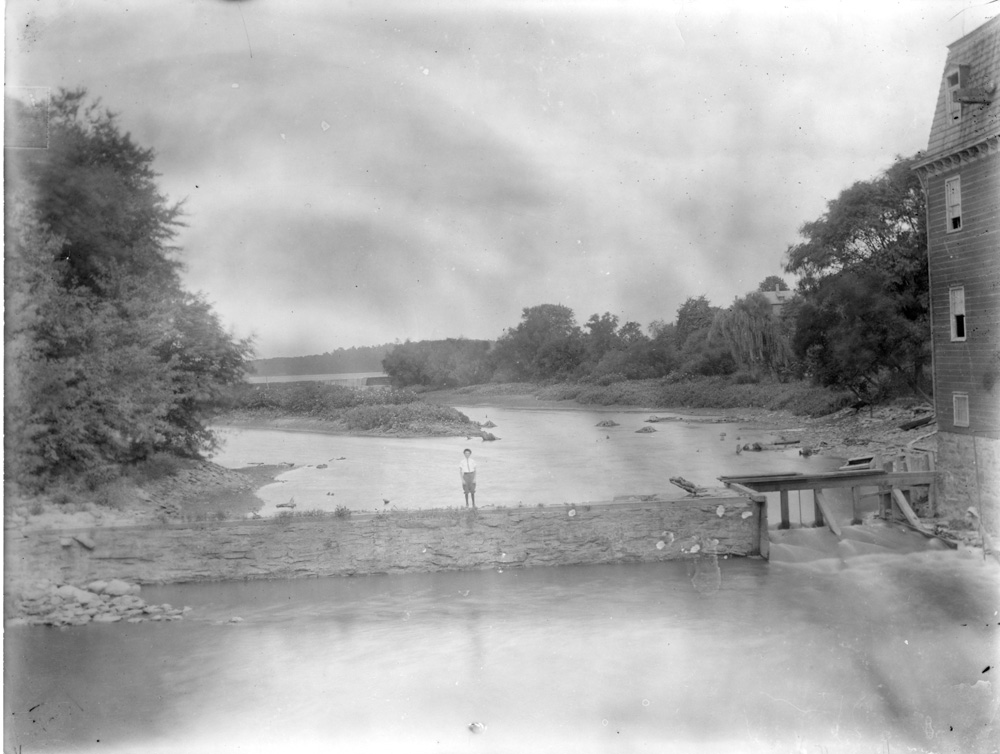
A boy stands on the milldam of the Kingston Mill, which was first established in the 18th century.
Collection of the Historical Society of Princeton
Locating Princeton’s first European settler and the origins of local themes

A boy stands on the milldam of the Kingston Mill, which was first established in the 18th century.
Collection of the Historical Society of Princeton
Between mills, farms, and travel, the history of the Kingston area evokes multiple themes common to Princeton’s larger 18th century history. Uniquely, though, Kingston boasts the first European settlement in the region.
The oldest house in Princeton was built by Henry Greenland in 1683 (see the Greenland-Brinson-Gulick House). Providing stark contrast to the later Stony Brook Quaker community in the west, Greenland was a notoriously boisterous individual. He ran a tavern for travelers, which -- along with the Gulick Stage Line owned by Kingston resident John Gulick -- is symbolic of Princeton’s role as a crossroads in early America.
Gulick and Greenland were both farmers, like many others nearby. These early farms would not have been dissimilar from those of the yeomen at Stony Brook, providing sustenance for the families who lived there in simple dwellings.
Yet at the center of this community was the Kingston Mill. Established sometime mid-century and briefly destroyed during the Revolution, the mill was the commercial and social heart of the locality. Princeton’s Aqueduct Mills to the southwest and Worth’s Mill in Stony Brook served similar purposes -- as places to exchange goods and gossip. Mills were central to early New Jersey’s development.
Buildings:
Greenland-Brinson-Gulick House/Gulick Farm
Gulick-Hodge-Scott House
Millstead/Dr. Hendrickson House
Skillman-Forman-Gulick House